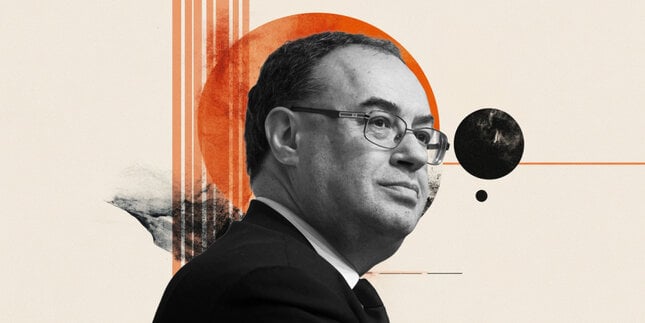Most traders obsess over “A+ setups.” But in live trading, those setups often fall apart—because they skip the hard part: deciphering the market’s narrative.
Your job is to:
-
Decipher the narrative.
-
Wait for the market to confirm you're right (at least for now).
-
Monetise the opportunity at a small cost if it doesn't pan out.
But because price can take multiple paths between two points, you need a suite of trades (signature, playbook, etc) tailored to those varying paths.
Only then can you truly skew risk-to-reward in your favour—with trades that reveal early when the scenario isn’t playing out, so you’re gone… not left holding the bag.
TLDR
You don’t skip the narrative and jump straight to “set-ups.”
That’s not trading to extract money from the market—that’s donating.
The deeper stuff
Look–when you have signature trades that align with how price is travelling, you give yourself a huge advantage:
You can commit them to memory simply by repeating them over and over—because they’re incredibly specific.
And when executing those trades becomes as automatic as riding a bike, you free up the mental space to focus wholly on deciphering the market narrative—just like you'd grasp the meaning of a short story or chapter in a book.
This is the skill that separates the minority who win from the majority who lose.
But unless you have a framework of principles to guide you, you’re effectively trying to interpret a book written in braille.
Traders who finally get consistent all reach the same realisation:
The money’s in deciphering the narrative—before you ever put on a trade.
Watch the short clip showing this in action—in live, real market conditions.
Forex and derivatives trading is a highly competitive and often extremely fast-paced environment. It only rewards individuals who attain the required level of skill and expertise to compete. Past performance is not indicative of future results. There is a substantial risk of loss to unskilled and inexperienced players. The high degree of leverage can work against you as well as for you. Before deciding to trade any such leveraged products you should carefully consider your investment objectives, level of experience, and risk appetite. The possibility exists that you could sustain a loss of some or all of your initial investment and therefore you should not invest money that you cannot afford to lose. You should be aware of all the risks associated with trading on margin, and seek advice from an independent
Editors’ Picks

EUR/USD remains below 1.1750 ahead of ECB policy decision
EUR/USD remains on the back foot below 1.1750 in the European session on Thursday. Traders move to the sidelines and refrain from placing any fresh directional bets on the pair ahead of the ECB policy announcements and the US CPI inflation data.

GBP/USD stays defensive below 1.3400, awaits BoE and US CPI
GBP/USD oscillates in a narrow band below 1.3400 in European trading on Thursday. The pair trades with caution as markets eagerly await the BoE policy verdict and US consumer inflation data for fresh directional impetus.

Gold holds losses below $4,350 ahead of US CPI report
Gold struggles to capitalize on the previous day's move higher and holds its pullback below $4,350 in the European session on Thursday. The downtick could be attributed to some profit-taking amid a US Dollar bounce. All eyes now remain on the US CPI inflation data.

BoE set to resume easing cycle, trimming interest rate to 3.75%
The Bank of England will announce its last monetary policy decision of 2025 on Thursday at 12:00 GMT. The market prices a 25-basis-point rate cut, which would leave the BoE’s Bank Rate at 3.75%.

US CPI data expected to show inflation rose slightly to 3.1%, cooling Fed rate cut bets for January
The US Bureau of Labor Statistics will publish the all-important Consumer Price Index (CPI) data for November on Thursday at 13:30 GMT. The CPI inflation in the US is expected to rise at an annual rate of 3.1% in November
RECOMMENDED LESSONS
Making money in forex is easy if you know how the bankers trade!
I’m often mystified in my educational forex articles why so many traders struggle to make consistent money out of forex trading. The answer has more to do with what they don’t know than what they do know. After working in investment banks for 20 years many of which were as a Chief trader its second knowledge how to extract cash out of the market.
5 Forex News Events You Need To Know
In the fast moving world of currency markets where huge moves can seemingly come from nowhere, it is extremely important for new traders to learn about the various economic indicators and forex news events and releases that shape the markets. Indeed, quickly getting a handle on which data to look out for, what it means, and how to trade it can see new traders quickly become far more profitable and sets up the road to long term success.
Top 10 Chart Patterns Every Trader Should Know
Chart patterns are one of the most effective trading tools for a trader. They are pure price-action, and form on the basis of underlying buying and selling pressure. Chart patterns have a proven track-record, and traders use them to identify continuation or reversal signals, to open positions and identify price targets.
7 Ways to Avoid Forex Scams
The forex industry is recently seeing more and more scams. Here are 7 ways to avoid losing your money in such scams: Forex scams are becoming frequent. Michael Greenberg reports on luxurious expenses, including a submarine bought from the money taken from forex traders. Here’s another report of a forex fraud. So, how can we avoid falling in such forex scams?
What Are the 10 Fatal Mistakes Traders Make
Trading is exciting. Trading is hard. Trading is extremely hard. Some say that it takes more than 10,000 hours to master. Others believe that trading is the way to quick riches. They might be both wrong. What is important to know that no matter how experienced you are, mistakes will be part of the trading process.
The challenge: Timing the market and trader psychology
Successful trading often comes down to timing – entering and exiting trades at the right moments. Yet timing the market is notoriously difficult, largely because human psychology can derail even the best plans. Two powerful emotions in particular – fear and greed – tend to drive trading decisions off course.
